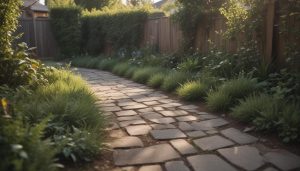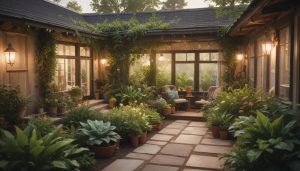Easy Indoor Plants You Can Grow for a Greener Home
Daniel Fisher August 23, 2025
Bringing nature inside is a trend many homeowners love, and easy indoor plants offer a way to add charm and a sense of calm. This detailed guide shows how you can transform living spaces with low-maintenance houseplants, offering tips for choosing, caring for, and maximizing the benefits of greenery indoors.
Simple Indoor Plants That Thrive With Little Attention
The world of easy indoor plants is full of choices that suit any lifestyle and skill level. Snake plant, pothos, and spider plant rank high on the list for both beginners and those with a busy schedule. These resilient varieties tolerate inconsistent watering and lower lighting, adding a natural touch to homes without demanding constant care. Such plants are known for their forgiving nature and strong roots, making them reliable options for bringing year-round life into your living space.
While selecting simple indoor plants, consider light and humidity needs. Hardy options thrive in dim corners and handle environmental shifts with ease. For those unsure about their plant care routines, ZZ plants and peace lilies offer grace periods between waterings and rarely show distress, reducing the stress of maintenance. Each species possesses unique foliage shapes and colors, contributing both texture and vibrancy to any room. Mixing varieties creates a dynamic visual landscape with minimal effort.
Easy-care greenery not only beautifies but also brings mental and physical health benefits. Studies suggest that indoor plants may improve mood and help purify air. Families, singles, and busy professionals alike find these low-maintenance options make plant ownership stress-free. As houseplant popularity grows, more people explore creative arrangements using these resilient species, finding satisfaction in watching them thrive with just basic care. The enduring popularity of simple indoor plants lies in their ability to flourish regardless of experience level or environment (see https://extension.psu.edu/a-guide-to-houseplants).
Light, Soil, and Water: Key Care Tips for Houseplants
Understanding the core care needs of indoor plants is crucial for keeping them healthy. Most easy indoor plants benefit from indirect light and well-draining soil, but watering practices make the biggest difference. Rather than sticking to a calendar, check soil moisture by touch before adding water. Overwatering leads to root rot, while underwatering slows growth. Balanced moisture is the secret to strong roots and lush leaves.
Soil plays a key role in plant health. General-purpose potting mixes work for most houseplants, but succulents and cacti need extra drainage to avoid excess moisture retention. Adding perlite or coarse sand to soil ensures roots access the oxygen they require. When repotting, choose containers with drainage holes and refresh the soil every year to keep nutrients available. Consistent soil care supports vigorous growth through each season.
Humidity and light requirements differ among common indoor species, but most easy-care plants adapt well to average home environments. If windows don’t offer enough natural brightness, consider grow lights to fill the gap. Grouping plants together can also boost humidity naturally. Understanding how each species responds to its setting helps fine-tune care and reduce issues. These steps form a foundation for keeping low-maintenance greenery healthy and vibrant (visit https://hgic.clemson.edu/factsheet/caring-for-houseplants/).
Indoor Plant Placement: Enhancing Home Decor and Wellness
Where you place easy indoor plants impacts both their survival and a home’s ambiance. Living rooms, kitchens, and bedrooms all benefit from added greenery. Positioning plants near windows ensures they capture ambient light, while corners can be brightened with hearty species like the snake plant or ZZ plant. Vertical plant shelves and hanging baskets allow creative arrangements that save space and add character to rooms with limited floor area.
Strategic plant placement isn’t just about aesthetics. Certain houseplants may filter indoor pollutants, promoting fresher air and a soothing atmosphere. Positioning foliage in entryways or on desks helps make daily environments more inviting. Consider grouping multiple varieties for an urban jungle effect or using single specimens to highlight key features. These choices aren’t just decorative—they can foster relaxation and even improve productivity at home.
Integrating easy indoor plants with existing décor is surprisingly simple. Colorful pots, woven baskets, and plant stands transform ordinary foliage into living centerpieces. Use trailing varieties for bookshelves, or compact options as dining table accents. With endless arrangement ideas, every home style finds a way to incorporate greenery for lasting beauty and wellness benefits (see https://www.ncbi.nlm.nih.gov/pmc/articles/PMC4419447/).
Common Challenges With Houseplants and How to Overcome Them
Even the easiest indoor plants experience challenges, but knowing how to recognize and address issues makes a difference. Yellowing leaves may signal overwatering, while brown leaf tips often point to low humidity or inconsistent moisture. Pests like spider mites or fungus gnats sometimes appear but are manageable with prompt attention. Observing plants weekly helps spot warning signs early before problems spread.
To combat common pitfalls, start by adjusting your care routine. If leaves turn pale, check for exposure to direct sun or insufficient light. Ensure pots permit drainage to prevent water from pooling around roots. Homemade soap sprays or gentle rinsing deals with pests naturally. Regular dusting of leaves also improves photosynthesis and reduces chances for outbreaks, making maintenance both proactive and preventive.
Patience is key when addressing houseplant issues. Sometimes, stress results from seasonal changes or recent repotting, and recovery may take days or weeks. Avoid moving plants often, as they quickly adapt to their light and humidity zone. With steady, consistent care, even problem-prone species rebound over time, returning to healthy growth and vibrant color (read more at https://extension.umn.edu/houseplants/common-houseplant-problems).
Pet-Friendly Indoor Plants for a Safe, Happy Home
Many popular houseplants can be toxic to pets, but there’s a growing list of safe, easy indoor plants for multi-animal households. Spider plants, Boston ferns, and certain palms are all considered nontoxic for cats and dogs. These choices allow families to enjoy the look and benefits of live greenery with peace of mind. Always double check plant safety by consulting reputable resources, especially before bringing new species home.
Creating safe zones for both pets and plants is easier than it seems. Place prized greenery on shelves or in hanging planters out of reach. Use heavier pots to prevent curious paws from tipping over containers. Pet-safe sprays deter chewing, but often, cats and dogs lose interest over time as plants become a natural feature of their space. Consistency and boundaries allow coexistence without constant supervision.
Pet-friendly indoor plants can still purify air and brighten interiors, so there’s no need to compromise style for safety. Regular care and cleaning keep both plants and pets healthy—removing fallen leaves or debris avoids accidental tasting or messes. With smart choices, every member of the household enjoys the calming, refreshing effects of easy indoor plants (resource: https://www.aspca.org/pet-care/animal-poison-control/toxic-and-non-toxic-plants).
Trendy Plant Displays and Creative Indoor Gardening Ideas
The popularity of easy indoor plants has inspired new ways to display greenery at home. Macrame plant hangers, terrariums, and wall-mounted planters offer contemporary approaches for small or large spaces. Vertical gardens are especially popular in apartments, turning blank walls into lush art. With the rise of remote work, home offices now frequently feature cheerful, easy-care foliage for both aesthetics and focus.
DIY enthusiasts are embracing upcycled containers and crafts for houseplant displays. Old mugs, glass jars, and recycled wood boxes serve as unique pots. Personalized plant labels and pebble arrangements add flair and make plant care routines more fun for all ages. Social media is full of inspiration for combining design and gardening, allowing anyone to showcase personal style while keeping care simple.
Community plant swaps and online gardening groups connect enthusiasts, offering advice and expanding collections through trades of cuttings. Workshops and virtual meetups inspire creativity and teach techniques for arranging or propagating indoor varieties. The result: more people not only enjoy greenery, but also connect with others who share a love for low-maintenance plants (learn more at https://gardeningsolutions.ifas.ufl.edu/plants/houseplants/index.html).
References
1. Pennsylvania State University Extension. (2021). A Guide to Houseplants. Retrieved from https://extension.psu.edu/a-guide-to-houseplants
2. Clemson Cooperative Extension. (2019). Caring for Houseplants. Retrieved from https://hgic.clemson.edu/factsheet/caring-for-houseplants/
3. Bringslimark, T., et al. (2009). The psychological benefits of indoor plants: A critical review of the experimental literature. Retrieved from https://www.ncbi.nlm.nih.gov/pmc/articles/PMC4419447/
4. University of Minnesota Extension. (2020). Common Houseplant Problems. Retrieved from https://extension.umn.edu/houseplants/common-houseplant-problems
5. ASPCA. (2023). Toxic and Non-Toxic Plants List. Retrieved from https://www.aspca.org/pet-care/animal-poison-control/toxic-and-non-toxic-plants
6. University of Florida IFAS. (2022). Houseplants. Retrieved from https://gardeningsolutions.ifas.ufl.edu/plants/houseplants/index.html







